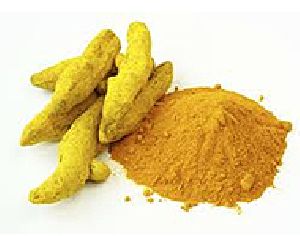
Turmeric
History Turmeric is the important spice of India whose usage dates back to Vedic period. During Vedic period it was was not only used as spice but was also used to treat various diseases. In nearly all the religious rituals it was used prominently. Dioscorides the famous Greek classical writer also mentioned this spice. Ancient Indian medical text Ayurveda talk in length about turmeric and its medicinal properties. Both sushruta and charaka, ancient Indian Physicians, also mentioned turmeric in their text. Marco Polo mentioned it as vegetable with properties of saffron. In Indonesia turmeric occupied significant place in marriage. Even in the modern period its medicinal quality is recognized worldwide and is the important item of trade. Turmeric has been used for many centuries. Due to its ancient origin, its actual place of origin cannot be ascertained but however it has been grown in many parts of south Asia and South East Asia. In south Asia India is major producer, consumers and exporters of turmeric whereas Java, Sumatra are the major producers in Indonesia. Apart from this turmeric is also now grown in Philippines, Japan, Korea, China, Sri Lanka, Nepal, East & West Africa,Caribbean Islands and Central America. Turmeric, belonging to the ginger family is a perennial plant found in the tropical regions of Southern Asia. Turmeric is mostly traded in the whole form, and then processed into powder, oil or oleoresin by the industrial sector. Medicinal use: Turmeric has been traditionally used for curing a number of diseases, it is known to prevent various sexual transmitted diseases, has anti-tumoral effects, is considered to be a possible treatment for cancer etc. Food additive: Coded as E100, turmeric is a widely used food additive for products that are specially packaged to protect from sunlight. It is also used in mustard, pickles for compensating fading color. Food Industry: Used in a number of products including bakery products, dairy products, cereals, sauces and ketchups, biscuits, cakes etc. Cosmetics: Turmeric is used to manufacture various sunscreen, fairness creams and lotions. The anti-oxidant properties helps to lighten the skin and also used for treating skin inflammations.
...more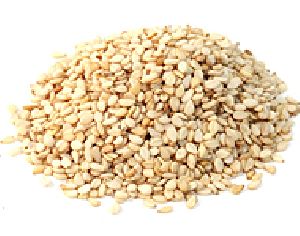
Sesame Seeds
Healthful sesame seeds can easily be added to a variety of menu items, adding taste, texture, and eye-appeal. Hulled Sesame seeds are Used as toping agents. added to breads, at the tops of hamburger buns, Sprinkled over bread rolls, Pastry, Choclates, and various food preparation.
...more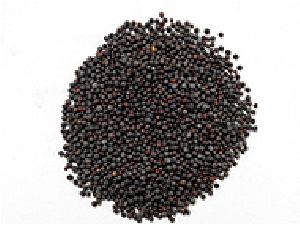
Mustard Seeds
Mustard is a well known spice that has a long history of medicinal use in stimulating internal and external applications. Externally, the rubefacient action of Mustard Seed causes a mild irritation to the skin, stimulating the circulation in that area, and relieving muscular and skeletal pain. Internally, its stimulating, diaphoretic action promote sweating and can help reduce fevers and relieve symptoms of colds and flu. Mustard Seed comes from two large shrubs, Brassica juncea (brown mustard) and Brassica hirta (white mustard), native to Asia. Both plants produce bright yellow flowers that contain small round seeds; brown mustard is more pungent than white. Mustard was used in ancient Greece and Rome as a medicine and a flavoring. By 800 AD, the French were using Mustard as an enhancement for drab meals and salted meats. It was one of the spices taken on Spanish explorations during the 1400s. Mustard powder was invented by Mrs. Clements of Durham, England, who made a fortune selling the dry, paleyellow mustard flour. Mustard Seeds Use: Mustard seeds are used as a spice, there are a number of ways to utilize them. Many cooks in places like India throw whole mustard seeds into a cooking pot with some oil before they start cooking a dish, ensuring that the oil is flavored with mustard when the heated seeds pop. Mustard Seed has long been relied upon to improve the digestive system and to promote a healthy appetite. Mustard Seed's topical use also extends to the relief of respiratory infections when used in baths, poultices, and plasters. Mustard Seed helps treat bronchitis, chest congestion, pneumonia, croup, and pleurisy. Packing: As per Exports Standard Packing As per Buyer Requirement
...more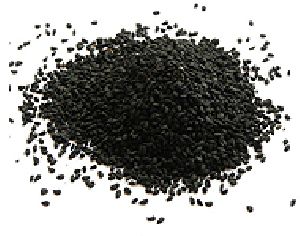
Kalonji
Nigella seeds are also known as Black Cumin Seeds We provides best natural and fresh Nigella Seeds, we are using only farm fresh pure natural Nigella seeds for export and sell. And it is hyginic and pure. Nigella Seeds used as a spice and herb which has great test as well as it is widely useful for health. Nigella Seeds is a common nutritional supplement and ingredient in Indian cooking. it is widely used in the foods as a flavor and used for increasing taste. Nigella seeds is considered an herbal medicine and have a great health benefits. Nigella Seeds is good source of contain protein, natural minerals, niacin, potassium, and dysgenic.It can be used for reduce asthma and blood pressure. It is also used as an ingredient of medicine and drugs.
...more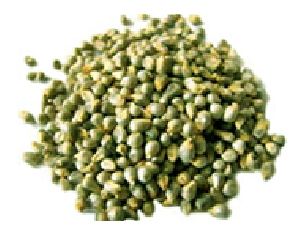
Green Millets
History Green Millet is one of the oldest foods from the family of millets very well known to humans and possibly the first cereal grain to be used for domestic purposes. Green Millet is highly nutritious, non-glutinous and is easy to digest. In fact, it is considered as one of the least allergenic and digestible grains available. With its warming quality this grain also helps to heat the body in cold or rainy seasons and climates. This premium quality agro product is known for high nutritional value, non-sticky after cooking and delicious taste. Specification :
...more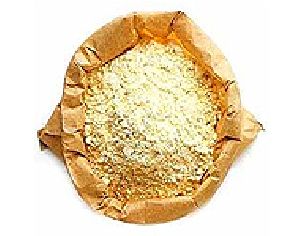
Gram Flour
Gram Flour is also known as Chickpea flour, Channa flour, Besan, or Garbanzo flour. It has slightly nutty flavour and earthy aroma. The super fine grind flour is made from 100% pure Chana Dal and is perfect for preparing onion bhaji, traditional potato and vegetable pakodas, and also sweet dishes. It is also used in many desserts and battered dishes all over the world.
...more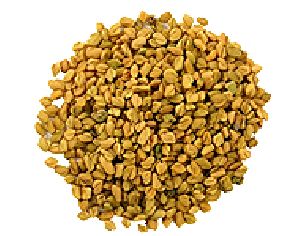
Fenugreek Seeds
Uncooked fenugreek seeds have an unpleasant, bitter taste, so the seeds are usually roasted and ground before use to mellow the bitterness. The seeds are very hard and difficult to grind, a mortal and pestle working best. Traditional Uses: : Fenugreek seeds are rich in vitamin E and is one of the earliest spices known to man. Fresh fenugreek leaves are beneficial in the treatment of indigestion, flatulence and a sluggish liver. The dried leaves of the fenugreek is used as a quality flavour for meat, fish and vegetable dishes. An infusion of the leaves is used as a gargle for recurrent mouth ulcers. A gargle made from the seeds is best for ordinary sore throat. Fresh Fenugreek leaves paste applied over the scalp regularly before bath helps hair grow, preserves natural color, keeps hair silky and also cures dandruff.
...more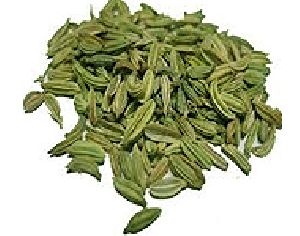
Fennel Seeds
History The fennel plant is native to the southern European and Mediterranean regions, although nowadays it is cultivated and produced in other parts of the world such as India, China and Egypt. Today fennel and fennel seeds are popular in Northern and Southern European cuisines as well as in Chinese and Indian cooking, where they are often included in specific spice blends. Fennel Seeds Use Fennel seeds have different uses in different parts of the world. In Scandinavia and central Europe, the seeds are used in baking, particularly in rye breads and sweet pastries. Fennel is extremely popular in Italy where they are often used to make sausages. Medicinally fennel seeds have traditionally been used to settle the stomach and digestive system. This is due to the high levels of certain components that are known to prevent muscle spasms and cramps. In the Indian culture, fennel seeds are often chewed after a meal in order to prevent gas or indigestion. The seeds can also be made into an after dinner digestive drink to relieve the same symptoms.
...more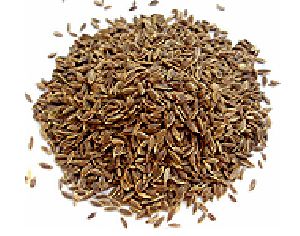
DILL / CARAWAY SEEDS
History As mentioned above, caraway is one of the oldest and first spices to be cultivated and used in Europe. Egyptians buried their dead with caraway, as this was thought to protect them against evil spirits and young Greek women used to rub the essential oil obtained from the seeds into their skin to promote a glowing and healthy-looking skin. One of the most popular folk stories that still holds true today is that caraway has powers that stop things or people from going astray or being stolen. Caraway Seeds Use: Farmers often gave their animals and fowl caraway seeds in their food to stop them from wandering off or getting lost. And even today, some bird keepers keep a piece of caraway dough in their barns or cages for the same reason. Caraway has always been known as a digestive and as having a beneficial effect on the stomach. Even in Roman times, caraway seeds were chewed on after eating a heavy meal in order to relieve gas, indigestion and any other stomach pains. Caraway is often added to cough medicines as it contains components that ease coughs and bronchitis. Caraway seeds are most popular in central European cooking, and this is reflected in the type of dishes that they are found in. Packaging : As per Exports Standard Packing As per Buyer Requirement
...more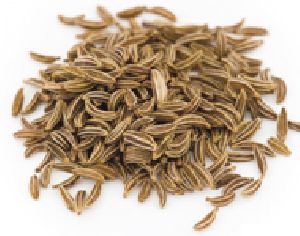
Cumin Seeds
History The cumin plant, Cuminum cyminum is native to the shores of the Mediterranean, including the upper regions of Egypt, where is has been cultivated for thousands of years. Nowadays, it is commercially grown in several surrounding countries such as Iran, Turkey and Syria, as well as other hot countries further afield, namely China, India and Latin America. The cumin spice is the dried seed of the cumin plant, which is why cumin is also known as cumin seeds and is available in this form. The cumin plant comes from the same plant family as parsley and it is also related to fennel, coriander and dill. Cumin is now mostly produced in India. Cumin Seeds Use Cumin is the second most popular spice in the world after black pepper. Cumin seeds are used as a spice for their distinctive aroma. Cumin is most commonly used to flavor food and is widely available in both seed and powder form. While cumin is a favorite on the spice rack, it has a number of curative properties which make it a versatile natural medicine.
...more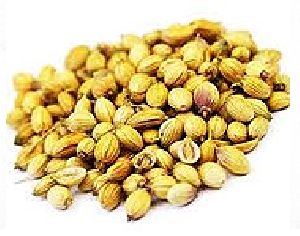
Corriander Seeds
History Coriander has been around for thousands of years, even as far back as 5000 BC. It is native to southern Europe and the Middle East and was used by the ancient Egyptians, Romans and Greeks. As for the mineral content, coriander has a phenomenal amount of potassium and is also a good source of calcium, magnesium and phosphorous. Coriander Seeds Use: Coriander has traditionally and is still used mainly to treat all kinds of stomach and digestive problems. It is said to help regain a loss of appetite and therefore is beneficial for sufferers of anorexia. Coriander has also been used for thousands of years in medicine, to mask the naturally unpleasant taste of some medicines, as well as for medicinal purposes.Coriander is predominantly used to flavour curries and soups but can be used in many more types of dishes and meals. Below are a number of ideas: Use in all types of curries, pickles, chutneys and sauces. Sprinkle over fresh salads. Use to flavour soups, carrot and coriander is quite popular. Add to stocks and gravies. Use to spice up stir-fries and bland vegetables such as spinach. Packing: As per Exports Standard Packing As per Buyer Requirement
...more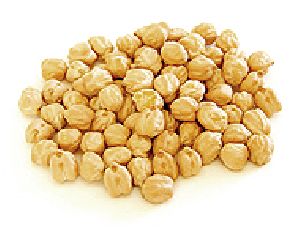
Chick Peas
History Chickpeas have a history that goes back to as far as 10,000 BC and even more. These are one of the ancient crops that were used by the hunters for sustaining their lives. The area that first began to grow chickpeas was the Middle East but later they were being grown in ancient Egypt, Rome and Greece during 7500 BC, where these were consumed in various forms like raw, broth, snacks, etc. They were later brought during the 16th century by the Spanish explorers, and since then chickpeas have been used in many forms. In fact, during the First World War, Germany started cultivating chickpeas as a coffee substitute. Chickpeas are a versatile crop that are grown in almost every part of the globe today. Some of the major producers of desi chickpeas are India, Pakistan, Myanmar, Australia and Bangladesh while the top producers of kabuli chickpeas are Turkey, Iran, Spain, Canada, Syria, USA, Ethiopia, Tanzania, Tunisia, Sudan, Malawi and Portugal. India is the largest producer of chickpeas followed by Pakistan, Turkey and Iran. In fact, about 70% of the total world production of chickpeas is dominated by India. Chickpeas Use The various benefits arising out of the consumption of chickpeas are: As chickpea are rich in dietary fibers, both soluble and insoluble, they help a lot in reducing the level of cholesterol and also in preventing the blood sugar level from rising too much immediately after having a meal. Being a rich source if molybdenum, chickpeas help in detoxifying sulphites, which can otherwise cause rapid heartbeats or headache if consumed too much by sulphite sensitive people. Too much reaction to sulphite is caused mainly due to lack of molybdenum to detoxify them. The presence of iron in chickpeas helps in replenishing lost energy, particularly for women who are menstruating or when they are pregnant. Also, chickpeas are low on calories and virtually fat free. The presence of iron in chickpeas helps in replenishing lost energy, particularly for women who are menstruating or when they are pregnant. Also, chickpeas are low on calories and virtually fat free. Chickpeas are also high on trace minerals like manganese which is an important part of many energy producing enzymes. Iron also helps in improving the hemoglobin level, thereby improving the flow of blood to the heart.
...more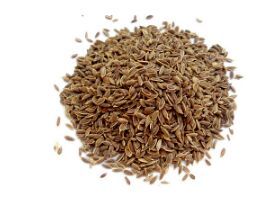
Caraway Seeds
125 - 650 Per Kilogram
Caraway seeds their animals and fowl caraway seeds in their food to stop them from wandering off or getting lost.
Certification : FSSAI Certified
Cultivation Type : Natural
Shelf Life : 1 Year
Color : Light Brown
Variety : Shahi Jeera
Grade Standard : Food Grade
Form : Seeds
Packaging Type : Plastic Pouch
Drying Process : Air Dried
Country of Origin : India
Packaging Size : 50gm, 100gm, 200gm, 250gm, 500gm
Usage : Cooking, Spices
Specialities : Rich In Taste, Pure, Non Harmful, No Artificial Color Added, Long Shelf Life, Hygenic, Good Quality, Good For Health, Fresh
...more
Indian spices
We are supplying all kind of spices in domestic market.

Turmeric Finger
Turmeric has been traditionally used for curing a number of diseases, it is known to prevent various sexual transmitted diseases, has anti-tumoral effects, is considered to be a possible treatment for cancer etc.
...more
Chickpeas
The various benefits arising out of the consumption of chickpeas are: As chickpea are rich in dietary fibers, both soluble and insoluble, they help a lot in reducing the level of cholesterol and also in preventing the blood sugar level from rising too much immediately after having a meal.
...more
Nigella Seeds
Nigella Seeds is a common nutritional supplement and ingredient in Indian cooking. it is widely used in the foods as a flavor and used for increasing taste. Nigella seeds is considered an herbal medicine and have a great health benefits. Nigella Seeds is good source of contain protein, natural minerals, niacin, potassium, and dysgenic.It can be used for reduce asthma and blood pressure.
...more
Green Millet
Green Millet is one of the oldest foods from the family of millets very well known to humans and possibly the first cereal grain to be used for domestic purposes. Green Millet is highly nutritious, non-glutinous and is easy to digest. In fact, it is considered as one of the least allergenic and digestible grains available
...moreBe first to Rate
Rate ThisOpening Hours